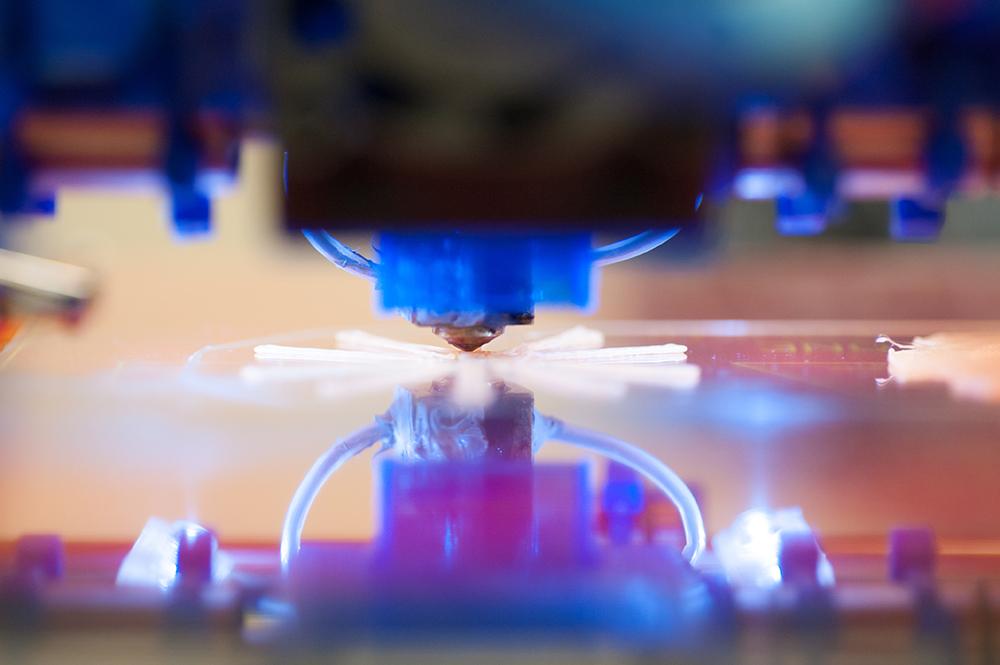Researchers at the University of Nottingham have recently been awarded a £6 million grant from the Engineering and Physical Sciences Research Council (EPSRC) in order to develop a toolkit for 3D printing. HB spoke to Ricky Wildman, Professor in Chemical Engineering at The University of Nottingham
The toolkit is intended to act as an instruction manual to improve the pathway from research to development and clinical adoption. Up until now, medtech industries have faced barriers in adopting 3D printing, as the materials have not been available, product development is arduous and the route to market is too long. It is hoped the toolkit will give healthcare professionals access to the latest science more quickly.
The Centre for Additive Manufacturing (CfAM) is a multidisciplinary research group at The University of Nottingham and is the recipient of the grant from the EPSRC. The group is made up of 100 researchers, PhD students and staff including biochemists, physicists and mechanical engineers, and is based in a purpose-built laboratory.
Developing the toolkit
The grant will be used by researchers to create a toolkit platform by which the materials and processes needed to 3D print medical technology and devices can be delivered on demand. Ricky said: “Our group of academics, industry partners and clinicians are working together to identify the main challenges stopping us from delivering our advanced products (our biopill, intestinal patch, biocatalytic reactors), which in turn will tell us what steps are needed as part of our toolkit. We will then put those steps together – screening tools, computational systems and manufacturing modalities – into a coherent ‘toolkit’ that can be rolled out to business.”
Additive Manufacturing is the technology behind creating customisable 3D objects and it works by adding layer upon layer of materials such as plastic, metal, or concrete to create smart, customisable products. The technology will be used to create highly functional, smart products for (bio)pharma, cell therapy/regenerative medicine, and (bio)catalysis, products that had been impossible to create using traditional manufacturing.
Ricky explained: “Additive Manufacturing, also known as 3D printing, is a type of manufacturing where we build up the structure layer by layer or point by point, rather than traditional methods of manufacturing where structures are created by taking material away (e.g. milling) or by forming (e.g. injection moulding).
“It was originally invented in the 1980s, developed further in the 1990s and then became widely available in the 2000s+. In the healthcare world, its most prominent uses are in the manufacture of hearing aid shells, dental aligners, and joint replacements.
“With the development of our toolkit at CfAM, we are aiming to reach the next level of product, where we incorporate advanced function: oral tablets that can deliver biomacromolecules (peptides/oligonucleotides) across the intestinal lining, an intestinal patch that will deliver stem cells to treat chronic intestinal diseases such as Crohn’s, and biocatalytic reactors for the hyper-efficient local manufacture of medicines.”
Tailored devices
The end goal is to create an instruction toolkit that will be able to identify how medtech can develop personalised, tailored medtech devices. Ricky says: “Our goal is to make it easy for industry to adopt additive manufacturing, and equip them with the information needed to manufacture personalised, tailored products that can meet patient need.”
Ricky explained how the toolkit will work: “With additive manufacturing, we envision personalised, bespoke products that are tailored to each individual patient’s needs. However, one of the challenges we face in realising this and getting additive manufacturing used in clinical settings, is that industry finds it difficult to adopt the technology. One of the reasons for this is that it requires a different way of thinking – we are used to manufacturing with traditional methods.
“At the Centre for Additive Manufacturing (CfAM), we plan to get around this problem by giving adopters the instruction manual for delivering their product idea – we are developing a toolkit that will make it easy for someone to identify what materials, how to use them, and how to manufacture with them, all with healthcare products in mind.”
It is anticipated that the toolkit can bring benefits to the health service, by bringing products to market more quickly and easily. In order to see widespread uptake across hospitals, pharmacies and the wider NHS, researchers recognise that manufacturing products embedded with advanced functionality need the capability to quickly, predictably, and reliably ‘dial up’ performance, so they are able to meet sector specific needs and specific advanced functionalities.
Benefits to the health service
Ricky set out the benefits it could bring to the NHS: “At the Centre for Additive Manufacturing, we work hard to educate industry and clinicians on the benefits of additive manufacturing/3D printing; personalisation, on demand manufacturing, point of care, distributive manufacturing. The goal of the NHS is of, course, to provide care to meet each and every patient’s needs – additive manufacturing offers that opportunity in areas as diverse as surgical planning, prosthetics, drug delivery and regenerative medicine. It is a technology of the future, now, and adopting it has the potential to give many more choices for treatment in the clinical arena.”
Professor Mohammad Ilyas, consultant at NHS Nottingham also added: “This is very exciting work which, through building cellular models, will improve our understanding of how the gut functions. More importantly, if successful, it will lead to a paradigm shift in clinical management and launch the use of autologous tissue engineered therapeutics for the treatment of bowel disease”.
